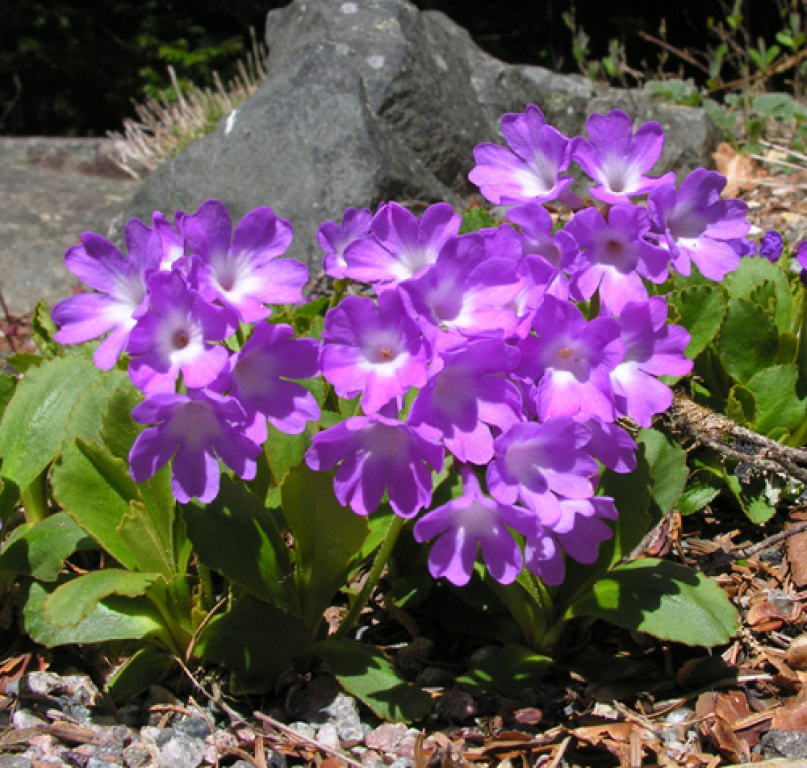Description and general information
This European alpine primrose is a member of the Auriculastrum section which includes such species as P. hirsuta, P. marginata and P. auricula. Primula pedemontana has a restricted range, growing at an elevation of 1400-3000 m in the Cottian Alps of France, the Graian Alps of Italy and the Cantabrian Mountains of Spain.
Unlike many members of the Auriculastrum group which grow on a limestone sunstrate, P. pedemontana prefers granitic soils. In the wild is grows on stony slopes, granitic cliffs and stony grasslands, usually in soils of heavy peat content.
The foliage of this species is quite distinctive, being olive-green with reddish marginal hairs and a somewhat sticky feel. The flower stems range from 5 to 15 cm in height.
Cultivation
This primrose is generally of easy culture. Full sun is best in northern growing areas but perhaps some shade from the hottest part of the day is advisable for warm regions.
The soil should be organically rich yet well drained. A mulch of stone chips will help keep mud from spoiling the low-held flowers.
Bloom period
The flowers are bright pink with a distinctive white eye. Flowering commences in late February in the Pacific Northwest but as late as early June in northern Newfoundland
Propagation
division, cuttings or seeds
Seed
To quote ORGS; sow at 20C for 6 weeks, then place at 4C for 6 weeks, then slowly raise temperature to 10C for 6 weeks. If there is no germination, repeat the cycle.
Division
Division is easily done after flowering. Try to maintain divisions with three growing tips to obtain a fuller plant.
Cuttings
Cuttings are best taken after flowering; keep cuttings shaded in a frame. A mix of peat and coarse sand works well.

